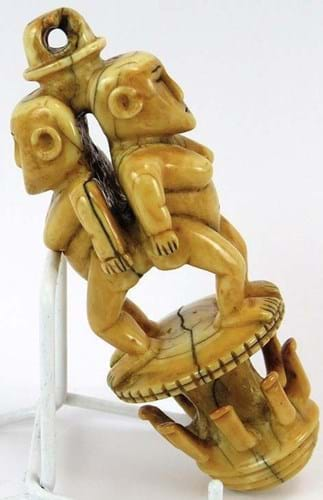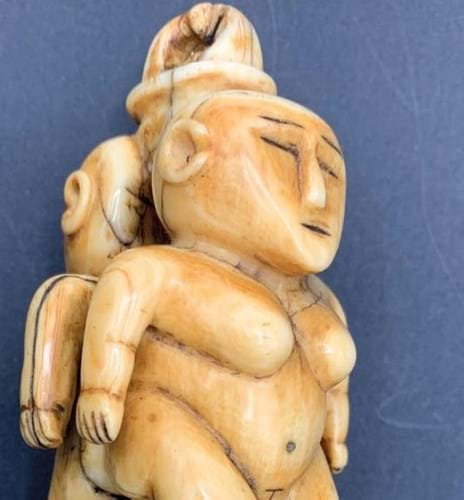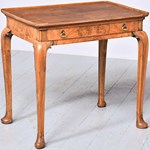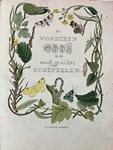Most were polished, smoked, stained and fitted with coconut-husk fibres to make the tabua presented as gifts for atonement or esteem between rival chiefs.
Figural carvings from Fiji are a much rarer form.
Kept in temples and shrines as embodiments of the ancestors, they are known in two basic types: small standing figures and those carved as hooks for suspending offerings.
Field reports by Victorian scholars refer to whale ivory hooks as some of the most revered of all Fijian objects.
Rather than created on the island, it is thought that they were made by craftsmen on the Ha’apai Islands at the centre of the Tongan archipelago and subsequently traded.
The 5in (12cm) carving that came to auction at Bentley’s of Cranbrook, Kent, on May 7 was believed to be late 18th or early 19th century in date.
Worked with two back-to-back female figures above an eight-pronged hook, it bears comparison with two similar pieces in UK institutional collections: one in the University of Aberdeen collected by Sir William MacGregor, chief medical officer in Fiji from 1875-88, and another in the University of Cambridge Museum of Archaeology and Anthropology acquired in 1876 by the first British governor of Fiji, Sir Arthur Gordon.
Both formed part of the remarkable exhibition Fiji: Art & Life in the Pacific held at the Sainsbury Centre in Norwich in 2016-17.
Bentley’s figure was without such provenance – auctioneer Nick Hall said his “eyes went out on stalks” when it came in for sale during an over-the-counter valuation – but attracted plenty of interest at its £800-1200 estimate. No others appear to have been sold at auction.
Hall was hopeful it could bring five figures and he was correct. It sold to a UK private collector on the phone against online underbidders at £10,000 (plus 19% buyer’s premium).
















